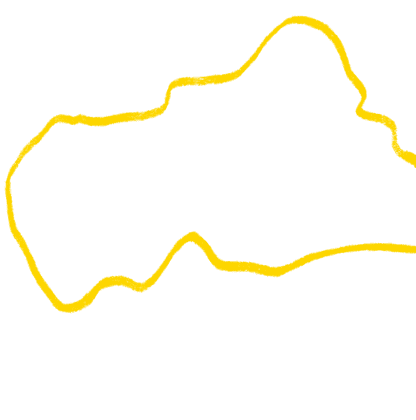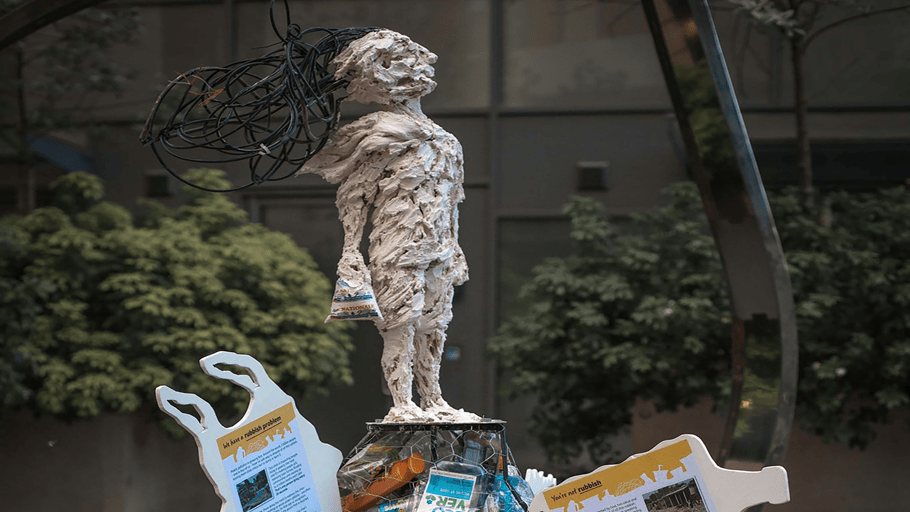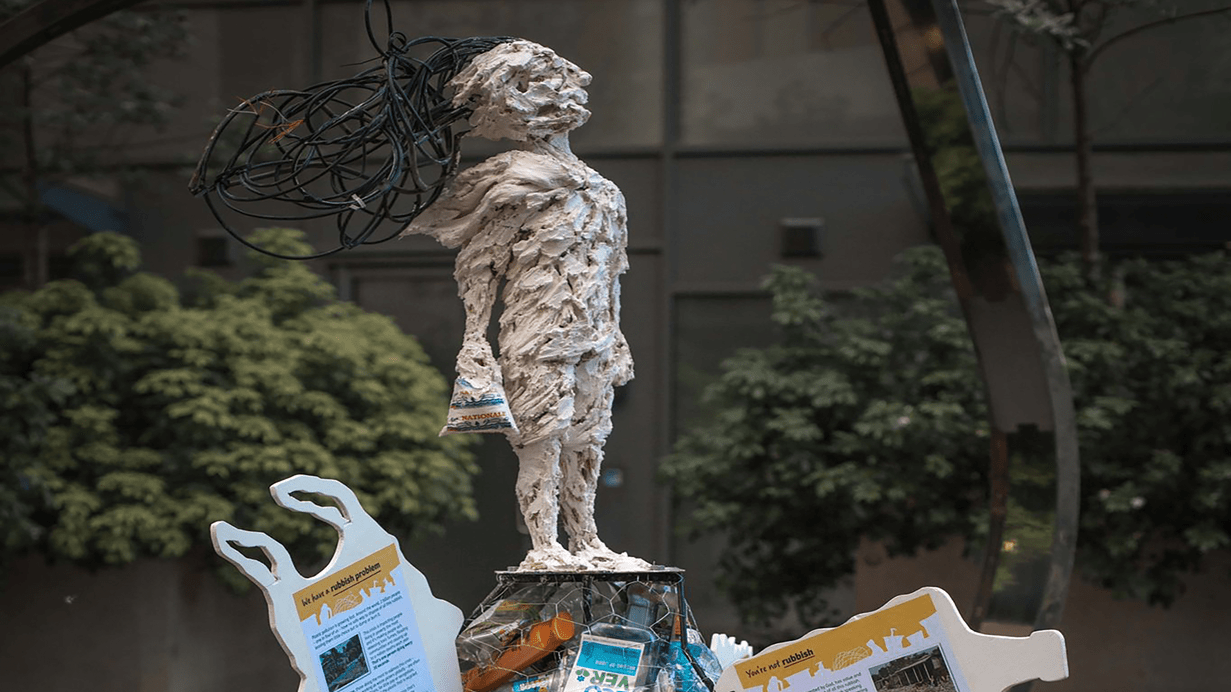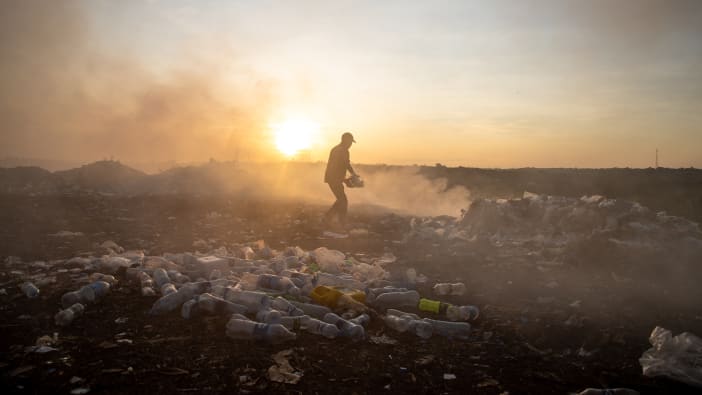If you were at events like Focus and Creationfest this summer, you may have come across our Rubbish statue. The sculpture, created by Joseph Paxton, shows a young person standing on a ‘mountain’ of rubbish – a reminder that we’re facing mountains of rubbish globally and it’s impacting people living in poverty the most.
We spoke to Joseph to find out more about his work, his background and what it was like to create the statue. Read the interview below, and check out our Rubbish Campaign page to learn more about the rubbish problem.
Tell us about yourself, your background and your artistic work.
I grew up in rural Wales where I developed a fascination and love for the natural environment and animals. I discovered sculpture at school and went on to study Fine Art at Newcastle University, where I had access to facilities that enabled me to develop my welding and armature building skills. After graduating, I moved to London to pursue my career as an artist.
My work is largely figurative and focuses mostly on the animal form but increasingly I am bringing the human form into my work. I’m thinking more about how my work can bring attention to our connection with the environment and natural world – with a view to helping us stay connected to nature, encouraging us to be aware of our impact upon it and need to preserve it.
Can you tell us about the process of making the Rubbish statue?
I was given a brief to create a sculpture to help raise awareness of the impact plastic waste is having on humans and the environment. I submitted a few sketches and Tearfund chose the concept of a child standing on top of a mountain of plastic waste.
I welded the frame for the base together first, then the brackets that would support the signage. I then cut out three wooden signs (from recycled plywood) in the shape of everyday plastic recycling-container items. The next stage was to weld a frame for the child figure, and the bolting points, for attaching it to the base.
Over the weeks leading up to creation of the sculpture, I had been collecting as many recyclables as possible. At this point I began to fill the base section with recyclables to see how much more I would need. As it turned out, I had nowhere near enough and had to go on a forage for more!













